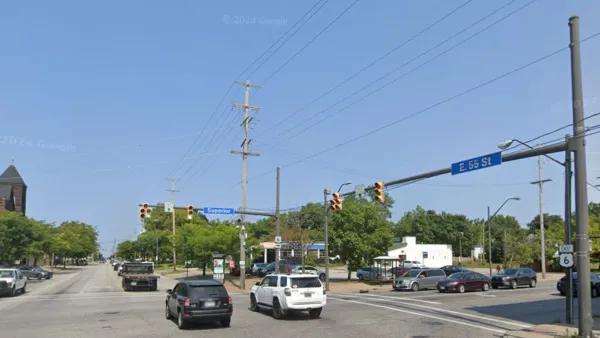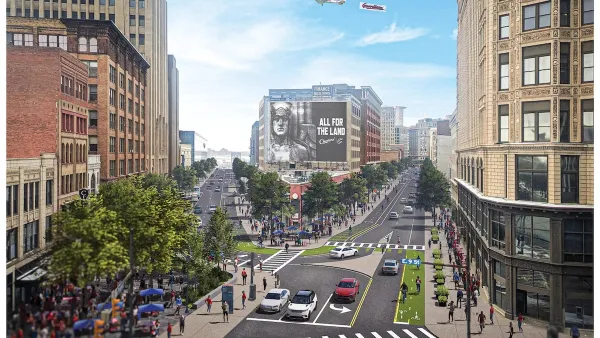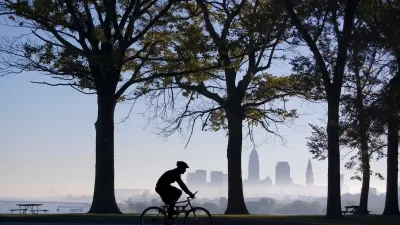If you don't have a car, it's not easy to get from Cleveland's inner city to the good-paying jobs in the suburbs. But a program that puts underused church vans to work as shuttles is making an impact.
It’s hard to get around without a car in Northeastern Ohio. Decades of neglect by the federal and state governments, which continues to reduce its funding commitment, have resulted in endless cuts to transit service, which result in years of ridership decline.
As the transit death spiral is in play, the state continues to pursue initiatives that encourage sprawl. Cleveland lost 6% of its population since 2010, according to the 2020 Census. The declining tax base and government neglect has stranded low-income people who cannot afford to move elsewhere and need transit the most.
Enter the Cleveland Clergy Coalition and Pastor Aaron Phillips. Phillips’ Sure House Baptist Church had four vans that were only used on Sundays. Realizing that people can’t get to a well-paying job if they don’t have a way to get there, as well as being unable to afford a way to get around without a job, the coalition decided to put their vans to use, to connect Clevelanders with better-paying jobs in the suburbs.
The initiative, called Get2Work Now, was kickstarted in 2019 with a $100,000 grant from the Fund for Our Economic Future’s Paradox Prize. “Too many people were facing this false choice that you either had to own or operate, maintain, what is a really expensive individual car for each family in order to get to work,” says Bethia Burke, president of the Fund. In Cuyahoga County, the prize also funded free transit passes for hospital workers and those finding and keeping work, as well as electric carshare for job seekers.
The church vans have connected 100 workers, who are mostly Black and live in Cleveland’s mid-to-south side, to well-paying manufacturing jobs in the suburbs.
FULL STORY: These Cleveland Church Vans Will Drive You to Work

Maui's Vacation Rental Debate Turns Ugly
Verbal attacks, misinformation campaigns and fistfights plague a high-stakes debate to convert thousands of vacation rentals into long-term housing.

Planetizen Federal Action Tracker
A weekly monitor of how Trump’s orders and actions are impacting planners and planning in America.

Chicago’s Ghost Rails
Just beneath the surface of the modern city lie the remnants of its expansive early 20th-century streetcar system.

Bend, Oregon Zoning Reforms Prioritize Small-Scale Housing
The city altered its zoning code to allow multi-family housing and eliminated parking mandates citywide.

Amtrak Cutting Jobs, Funding to High-Speed Rail
The agency plans to cut 10 percent of its workforce and has confirmed it will not fund new high-speed rail projects.

LA Denies Basic Services to Unhoused Residents
The city has repeatedly failed to respond to requests for trash pickup at encampment sites, and eliminated a program that provided mobile showers and toilets.
Urban Design for Planners 1: Software Tools
This six-course series explores essential urban design concepts using open source software and equips planners with the tools they need to participate fully in the urban design process.
Planning for Universal Design
Learn the tools for implementing Universal Design in planning regulations.
planning NEXT
Appalachian Highlands Housing Partners
Mpact (founded as Rail~Volution)
City of Camden Redevelopment Agency
City of Astoria
City of Portland
City of Laramie





























